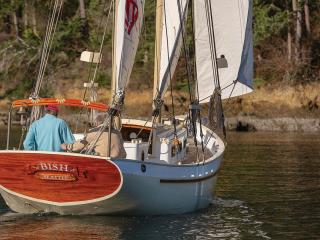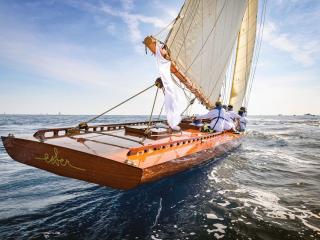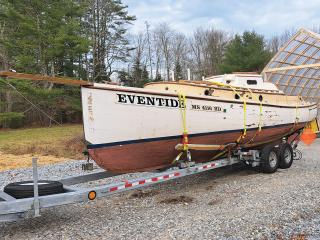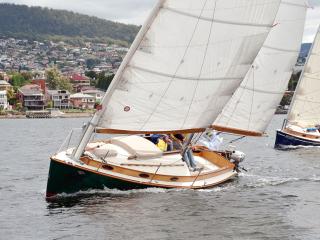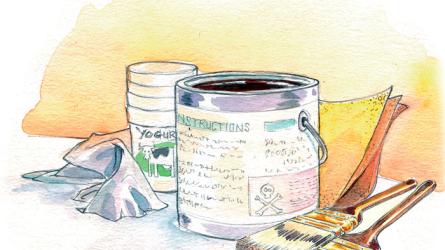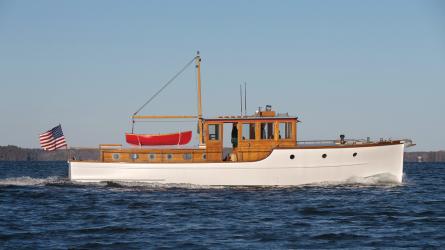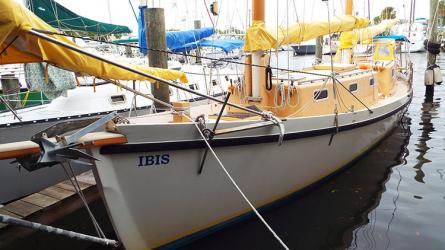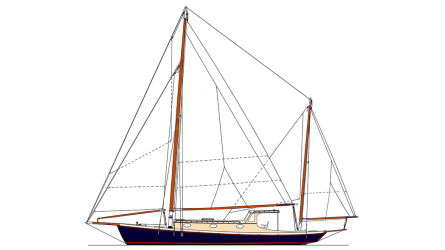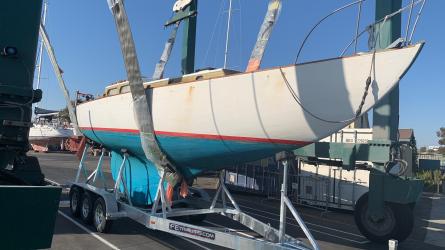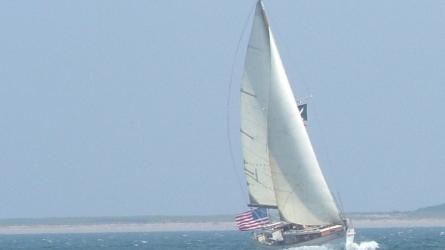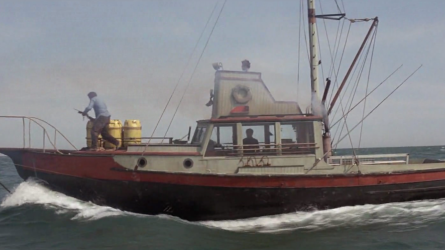March / April 2024
The Hand-e-Billy
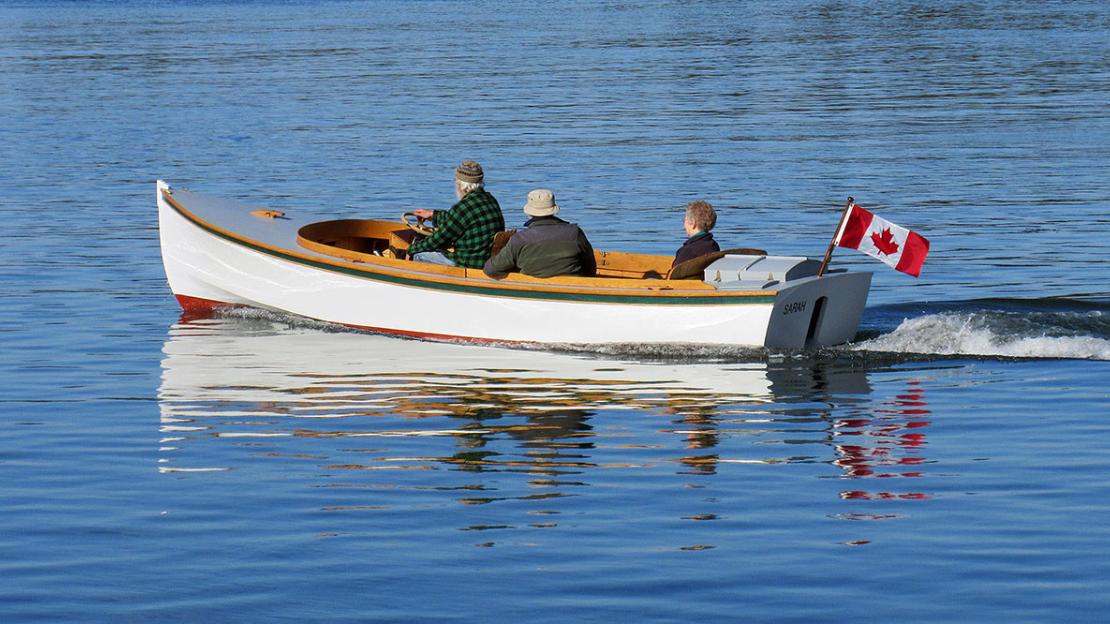
MARTHA BRYAN
SARAH, a modification of the author’s Handy Billy design of 1997 that he calls the Hand-e-Billy, is powered by a 3,000-watt electric outboard to her hull speed of just over 5 knots. Built to be trailerable, she has an 8,960-watt-hour lithium-iron-phosphate battery that charges on household power and can go 40 miles on a full charge.
To address climate change, it would seem that recreation should maximize well-being and minimize harm to the environment. If fossil fuels are consumed in the process, the goal should be to get the most recreational value for the least amount of fuel.
To illustrate how far we are from this thinking, consider this: a 16' boat, designed to be efficient while carrying a family of four at a speed of 5 knots, will consume as little as one-quarter of a gallon of fuel per hour. Today’s ubiquitous 16' deep-V hull with the same family aboard and traveling at 20 knots will consume approximately 4 gallons per hour. If recreation is the goal, the family that chooses speed should aim to get 16 times as much enjoyment from their hour on the water. Until we have a pleasure meter installed in our cell phones, the foregoing math can at least illustrate the size of the gap between the fuel use we have come to accept in order to reach planing speed and the far lesser amount needed if we choose boating at displacement speeds.
Designed in 1997, my first Handy Billy—named to recognize William Hand Jr.’s efficient V-bottomed designs of the early 20th century—is an 18' boat with a 15-hp outboard (see WB Nos. 159–161). I had hoped that it would inspire even lower-horsepower and more-efficient boats. Instead, in the 26 years since then, the average horsepower of recreational boats has increased dramatically; today, the largest outboard motor on the market is 600 hp and weighs 1,269 lbs.
Presented here is SARAH, the first of what I’m calling the Hand-e-Billy design, an adaptation for electric power that attempts to help recreational boating address the problem of climate change. It is my belief that no matter how many wind generators and solar panels we employ, we cannot live sustainably on Earth without also simply slowing down and consuming less.
In spite of the buzz surrounding high-speed electric boats and the lure of flying on foils, moving a number of people efficiently on the water will always require a displacement boat. If that boat lives on a trailer and is to be towed behind a modest-sized family car, it will probably have a maximum waterline length of 16' to 18', and such a boat will have a theoretical hull speed of about 5 knots.
To read the rest of this article:
Click the button below to log into your Digital Issue Access account.
No digital access? Subscribe or upgrade to a WoodenBoat Digital Subscription and finish reading this article as well as every article we have published for the past 50-years.
ACCESS TO EXPERIENCE
Subscribe Today
1 YEAR SUBSCRIPTION (6 ISSUES)
PLUS ACCESS TO MORE THAN 300 DIGITAL BACK ISSUES
DIGITAL $29.00
PRINT+DIGITAL $42.95
Subscribe
To read articles from previous issues, you can purchase the issue at The WoodenBoat Store link below.
 Purchase this issue from
Purchase this issue from
